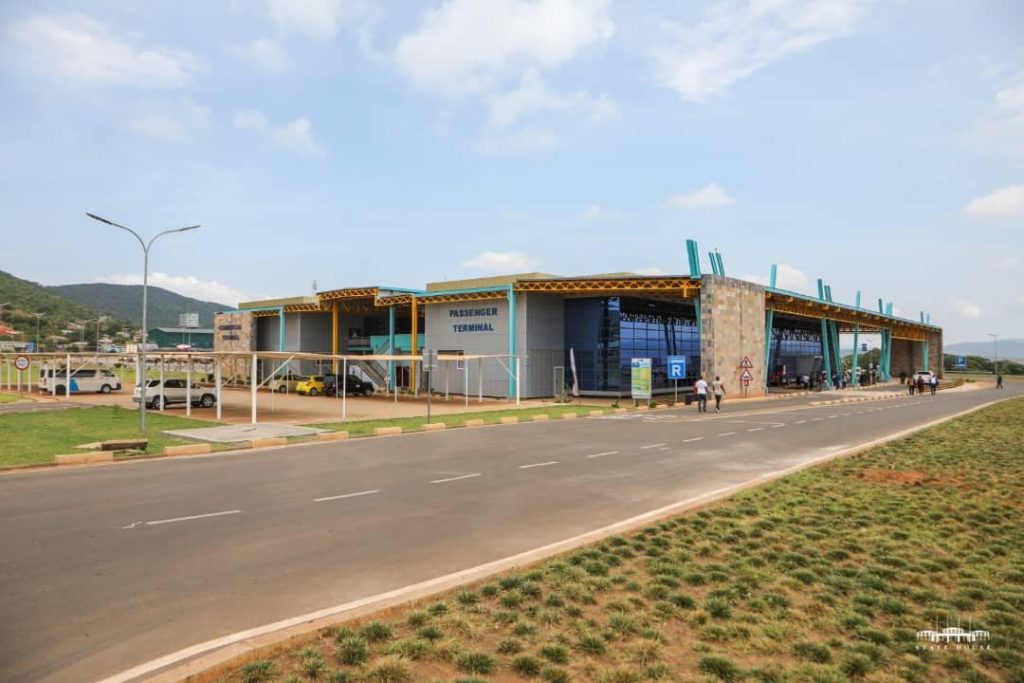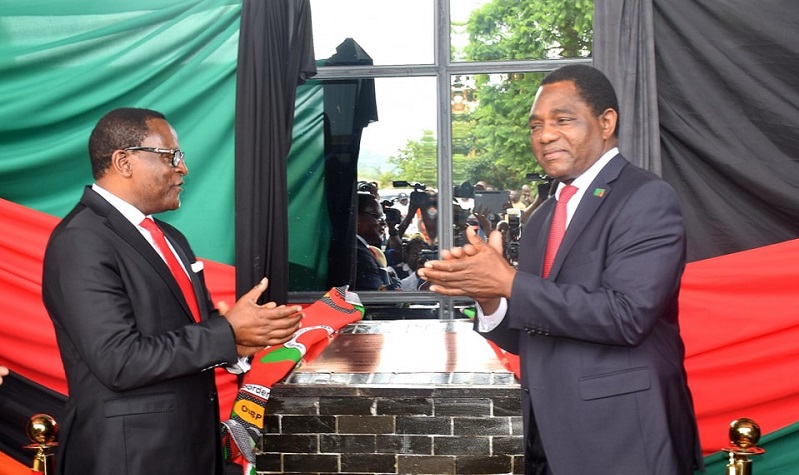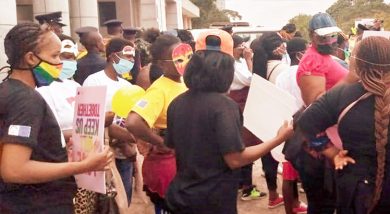Two nations, one border
At Mwami-Mchinji One Stop Border Post (OSBP) stands a giant billboard, proclaiming:“Two nations, one border.”
It heralds a new era, not just of bricks and mortar, but of harmonised, simplified, standardised and fast-paced trade.

The billboard welcomes Zambians and Malawians to a new chapter of streamlined business processes, shared posterity and opportunities.
It is also a mark of success for the Common Market for Eastern and Southern Africa (Comesa) that is leaving no stone unturned in promoting regional intergration, improved efficiency and reduced delays in trade.
Joy in the air
The air crackles with a tangible buzz, a chorus of excitement echoing beyond the physical pillars.
Mchinji Cross Border Traders Association secretary Peter Tsirizani beams brighter than the midday sun.

His eyes, once clouded by the tedium of old-border bureaucracy, now sparkle with newfound ease.
“The OSBP is a miracle worker,” he proclaims, his voice thick with relief. “No more endless queues, no more mountains of paperwork! Everything is under one roof, a symphony of efficiency!”
Tsirizani claims corruption has been reduced at the border since everything is done in the open.
Cross Border Traders Network for Eastern and Southern Africa general secretary Steven Yohane agrees with Tsirizani.
“The OSBP has ushered us into an era of fast and efficient trade processes,” he expresses his joy, describing the new border post as an embodiment of efficiency in trade.
Truck drivers
And it’s not just traders like Tsirizani and Yohane who are singing praises for the OSBP.
Truck drivers, once condemned to days-long border purgatory, now whistle tunes of speedy clearance.
A Malawian truck driver Aaron Phiri and his Zambian counterpart Jimmy Zulu marvel at the speed of clearing goods at the border.
“I used to age at those old checkpoints,” chuckles Zulu, “now the road beckons again, time and cargo intact!”
Road Transport Operators Association of Malawi executive director Chrissie Flao agrees with the veteran hauliers, describing the OSBP as a game-changer.
She explains: “There is observable efficiency in terms of time spent to clear goods.
“In the past, we used to spend two or more days to get all the paperwork done and the process was cumbersome. Today, in just a few hours, our trucks are ready to hit the road again.”
Flao adds that less time spent at the border “translates into reduced costs, increased profits and a vibrant transport sector that is able to create employment and prosperity for the Comesa region.”
The new border has also generated excitement among clearing agents, tourists and casual travellers.
Costen Customs Clearing Agents officer Costen Mapemba expresses excitement at the OSBP.
“The new border post has simplified, standardised and harmonised trade, giving businesspeople an exciting experience,” he explains, joking that clearing of goods is now taking place at the speed of a lightening.
Tourists and casual travellers
Germany based tourists Jones Walker and his wife Rebecca say the OSBP is the way to go if Africa is to attract more tourists.
“Faster border crossings make it easier for tourists to plan multi-country trips within Comesa, allowing them to experience the diverse cultures, wildlife and landscapes of the region,” says Walker, jumping into a Land Rover.
Even casual travellers like Lilongwe-based Christina Banda, who frequents Lusaka to visit family and friends, find their journeys transformed.
“Remember the old days, Wakisa?” she asks her cousin, eyes twinkling. “Hours spent stamping forms, battling grumpy officials? Now, crossing feels like a breeze, a warm handshake between brothers!”
Wakisa, from John Howard in Lusaka, Zambia, nods emphatically.
“The OSBP,” he declares, “is a game-changer. Friendly faces, swift service, it’s like stepping into a future we only dreamed of. This, Christian, is Comesa in action, paving the way for a united and prosperous Africa!”
The OSBP concept
Malawi Ministry of Trade director of trade in goods Charity Musonzo demystifies the OSBP as a “trade, transport and security facilitation tool, an arrangement where travellers and cargo only stops once at the country of entry for clearing.”
In the past, travellers would stop twice—at Mchinji Border on the Malawi side and on the Zambia side at Mwami, doing almost the same things at each stop.
During the launch of the OSBP on December 7 2022, Musonzo and Comesa general secretary Chileshe Mpundu Kapwepwe took turns explaining the benefits of OSBP to Malawi President Lazarus Chakwera and his Zambian counterpart Hakainde Hichilema who commissioned the start-of-the art facility.
They explained that the OSBP would simplify trade, cut clearing time for goods and travellers, thereby reducing costs of doing business and enhancing the economic bloc’s competitiveness in trade.
“For the governments of Malawi and Zambia, they will reduce costs of doing business and enhance their revenue collection,” said Musonzo.
Mwami-Mchinji OSBP, according to Kapwepwe, is important as it serves both the Nacala and Mtwara corridors.
She explained that the OSBP “symbolically cements the fraternal ties between the people of Zambia and Malawi”, promising them more jobs, sustainable economic growth and development.
Comesa, African Development Bank, European Union, GIZ and other partners helped Zambia and Malawi to modernise and upgrade their borders into one.
Barriers to doing business
OSBPs, according to South African-based development expert Dr Edward Mitole and Malawian trade expert Timothy Shawa, will help reduce barriers to doing business in Africa.
Corruption, bureaucracy, insufficient technology infrastructure, regular power blackouts, currency fluctuations and inflations are some of the barriers to doing trade in the region, according to the World Bank and the Malawi Country Economic Memorandum entitled A Narrow Path to Prosperity.
Others are low literacy and education levels, lack of skilled labour, limited access to finance, fragmented and informal markets, weak rule of law and limited consumer purchasing power.
Kapwepwe argues that if border posts are modernised, “large and small traders will clear their goods at an immensely reduced costs. This will, in turn, increase their sales and make goods more affordable to the majority of people; thereby improve their livelihoods.”
OSBP Bottlenecks
As the region is making steadily progress towards regional integration, some traders claim that some teething problems remain.
They claim that there are “too many roadblocks” where police officers demand “unofficial fees”.
Tsirizani explains: “Between the OSBP and Mchinji Boma is a distance of about 12 kilometres, but sometimes businesspeople are stopped at three or more police roadblocks. What for?
“And, some police officers demand money, claiming we have under declared goods to revenue authorities.
“Are police officers qualified to collect duty from businesspeople or deal with issues of trade and taxation?” he complains.
Malawi Police Service spokersperson Peter Kalaya asks: “Who is making those allegations? I can assure you that those are mere allegations and they remain as such until one produces proof”.
While applauded authorities for the changes, Flao claims the parking area for trucks is “still too congested” despite Musonzo assuring people during the launch that speedy clearing of goods would help decongest the area.
“With the OSBP, trucks will be cleared fast and this will help to decongest the two terminals,” Musonzo said.
OSBP Consolidation
Despite the challenges, Comesa encourages member States to adopt the OSBP concept. And, many seem to have bought the idea.
Zambia and Zimbabwe also runs the Chirundu OSBP.
Malawi is busy building OSBPs in Mwanza and Dedza where it shares borders with Mozambique, and in Karonga where it borders with Tanzania.
In East Africa, OSBPs exist between Kenya and Tanzania at Namanga and Mashuru; Uganda and Rwanda at Katuna, Cyanika and Rusamo; between Uganda and South Sudan at Nimule and between Kenya and Ugana at Busia.
And indeed, OSBPs are just one brick in the grand edifice of Comesa’s vision.
Under Comesa’s marketing integration pillar, the regional economic bloc is working towards improving operational effictiveness of OSBPs by ensuring that processes and procedures are digitised and customs are automatated to further enhance speed and efficiency.
Conclusion
‘Two nations, one border’ is not just a slogan, but a symbol of regional integration, a testament to the power of collaboration in tearing down walls and building bridges, not just of concrete and steel, but of shared prosperity and opportunities.






One Comment